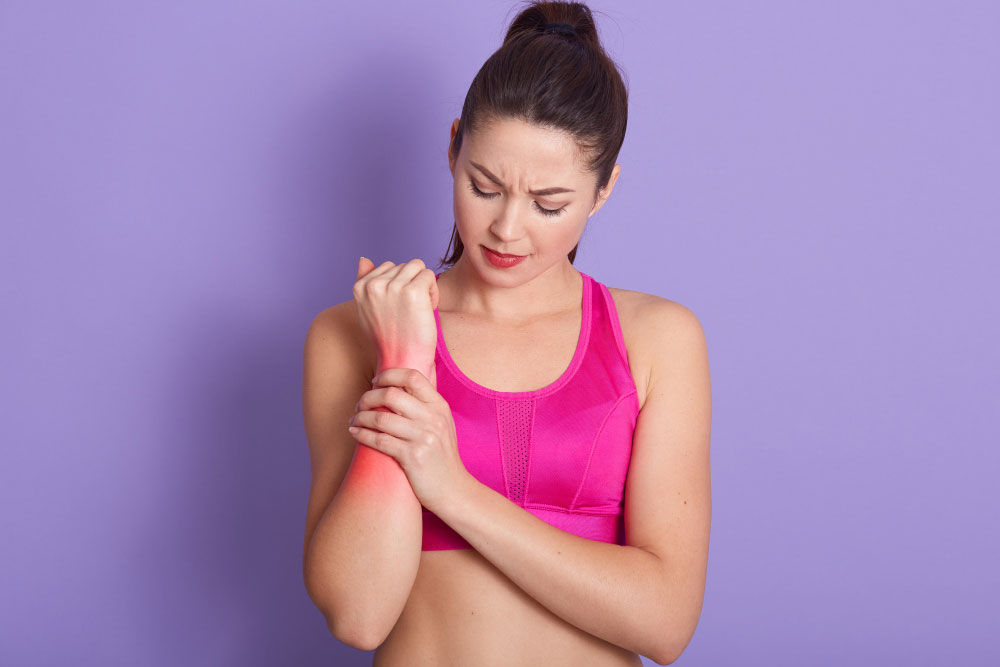Chronic pain can affect daily life activities. Severe hand and wrist pain makes it impossible to perform basic tasks. If conservative treatments like lifestyle changes and physical therapies haven’t helped your problem, you might get relief from cutting-edge therapies like platelet-rich plasma (PRP) therapy.
Pain relief is available from minimally invasive regeneration options, which may also enable you to resume your normal activities. PRP injections help in the healing of injured tissue and control painful inflammatory processes.
If you have a severe or chronic hand or wrist pain, visit our specialist for fast recovery. Our team at Specialty Care Clinics is qualified and experienced to treat many conditions.

PRP THERAPY
Platelet Rich Plasma (PRP) therapy uses the body’s own cells for its self-healing process. Blood contains liquid and solid particles like erythrocytes, white blood cells, and platelets. Platelets play an important role in blood clotting, and they also contain proteins known as growth factors that are crucial for wound healing. PRP injections help in the restoration of injured tissue and inhibit painful inflammatory processes because they contain a higher concentration of growth factors than are usually present in the blood.
PRP TREATMENT FOR WRIST PAIN
Healing components in PRP serum penetrate damaged wrist tissue and activate a cascade of healing cells. The typical causes of arthritis and other painful disorders are repaired and reversed by these cells.
- Cells help in repairing damaged tissue
- As the cartilage deteriorates in arthritis, it can compress the central nerve. PRP therapy can replace worn-out padding, repair torn cartilage, and reduces pressure on the nerve.
- By increasing the blood flow, PRP treatments for arthritis can reverse Keinbock’s disease.
- When injured, scar tissue surrounds the carpal tunnel and the central nerve and compresses the nerve. In order to make a nerve incision on the skin, doctors use an ultrasound machine to carefully inject PRP serum into the nerve incision. This method deteriorates tough microcells and develops new blood vessels in the affected area. As a result, the pressure around the central nerve decreases, restoring your mobility.

CONDITIONS OF THE HAND AND WRIST THAT CAN BE TREATED WITH PRP THERAPY
Trigger finger :- The trigger finger causes your finger or thumb to remain bent. It is also known as stenosing tenosynovitis. It affects tendons that control how your fingers bend and flex.
When your hand grips and flexes, a tendon in each finger moves back and forth through a sheath. The sheath act as a tunnel and held tendons in place. The tendons cannot pass through the sheath when the tendon or sheath is swollen, inflamed, or thickened. The tendon becomes stuck as a result, making it difficult for the related finger to straighten.
Carpal tunnel syndrome :- Also known as median nerve compression, this condition is caused by pressure on the median nerve. This nerve passes through the carpal tunnel, which connects your arm to your palm. Repetitive movements, rheumatoid arthritis, bone spurs, or an injury, can cause carpal tunnel syndrome. It can cause pain, tingling, and weakness in the hand and wrist by narrowing the carpal tunnel and exerting pressure on the median nerve.
Instability of the wrist :– Wrist instability occurs when one or more of the wrist ligaments lose their structural integrity, become weakened, or suffer damage. Scaphoid-lunate (SL) ligament and the triangular-fibrocartilage complex (TFCC) are the main ligaments in the wrist.
Hand Arthritis :– Simple daily tasks can become more difficult if you have arthritis in your wrist because it usually causes pain and stiffness. The severity of arthritis can vary, the majority of arthritis diseases are chronic. They can eventually cause severe joint damage because they are long-lasting.
Arthritis of the thumb :– Thumb arthritis, also known as carpometacarpal (CMC) joint, is a common aging condition that occurs when the cartilage on the ends of your thumb bones wears away. It is difficult to do simple tasks due to the severe pain, swelling, loss of strength, and range of motion caused by thumb arthritis.
